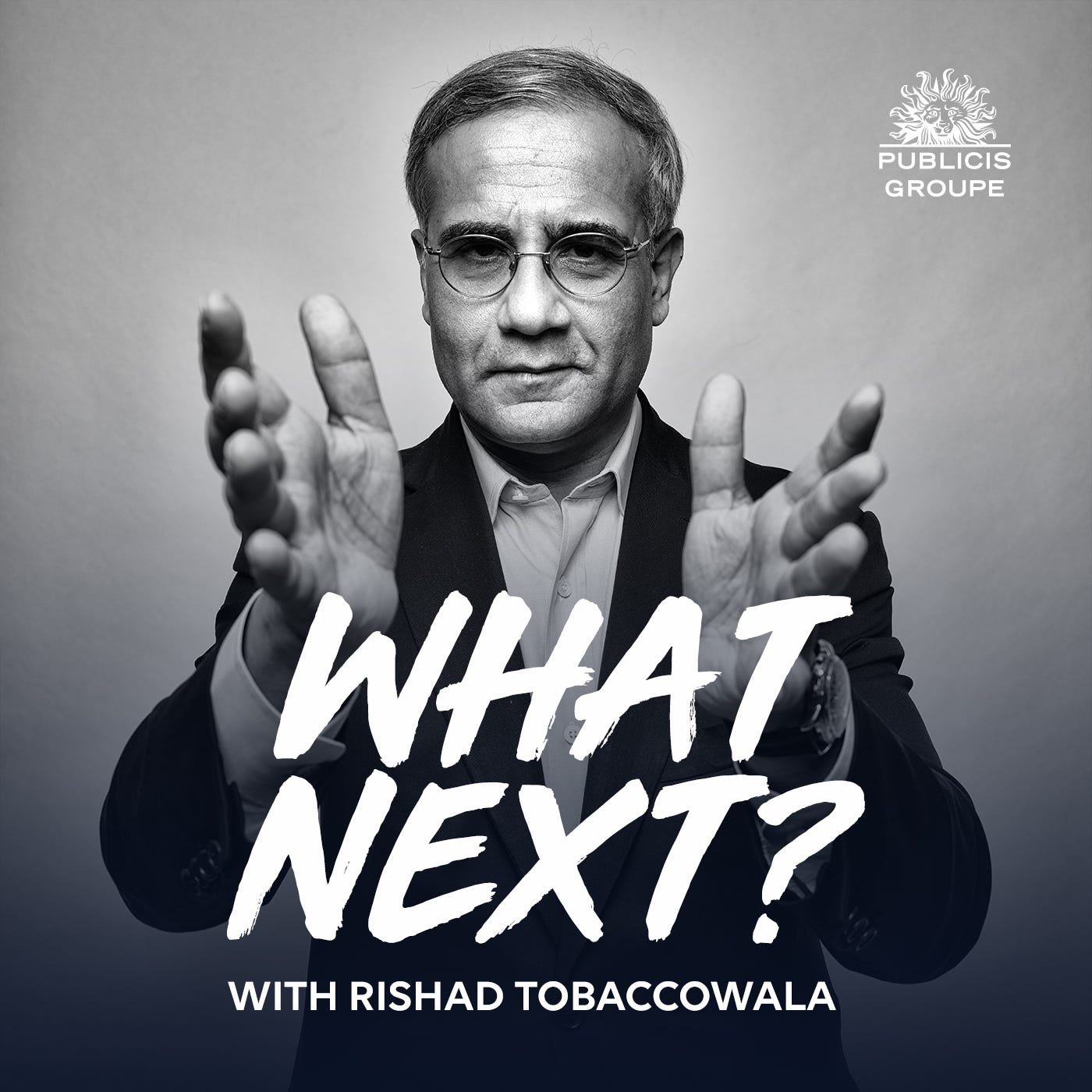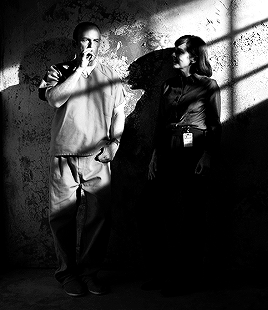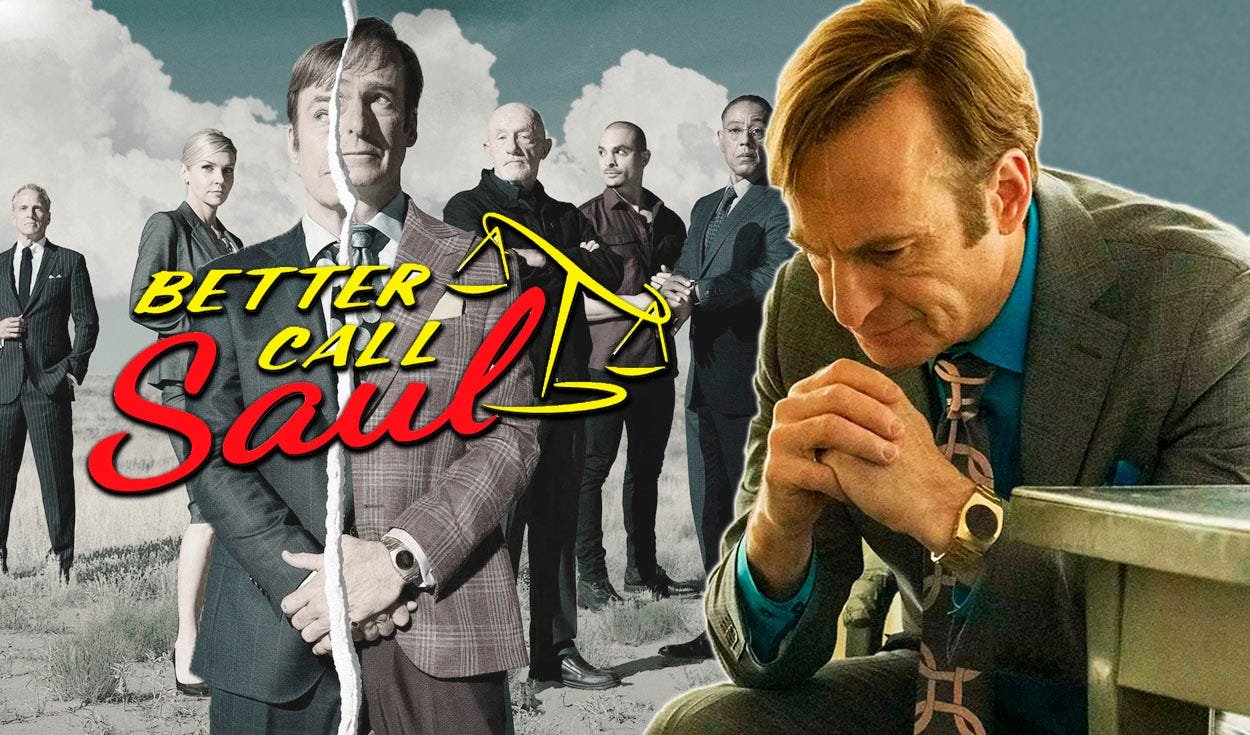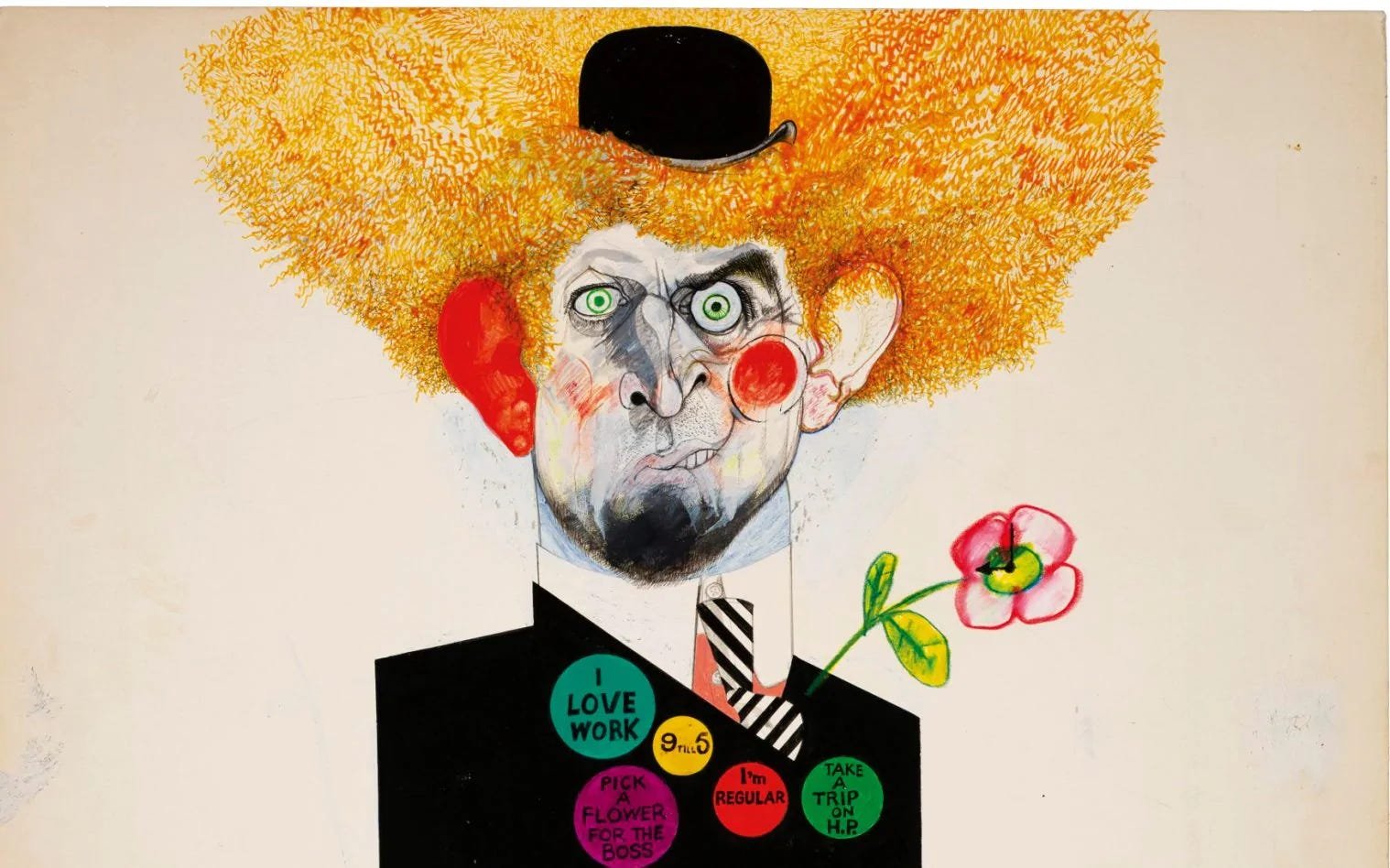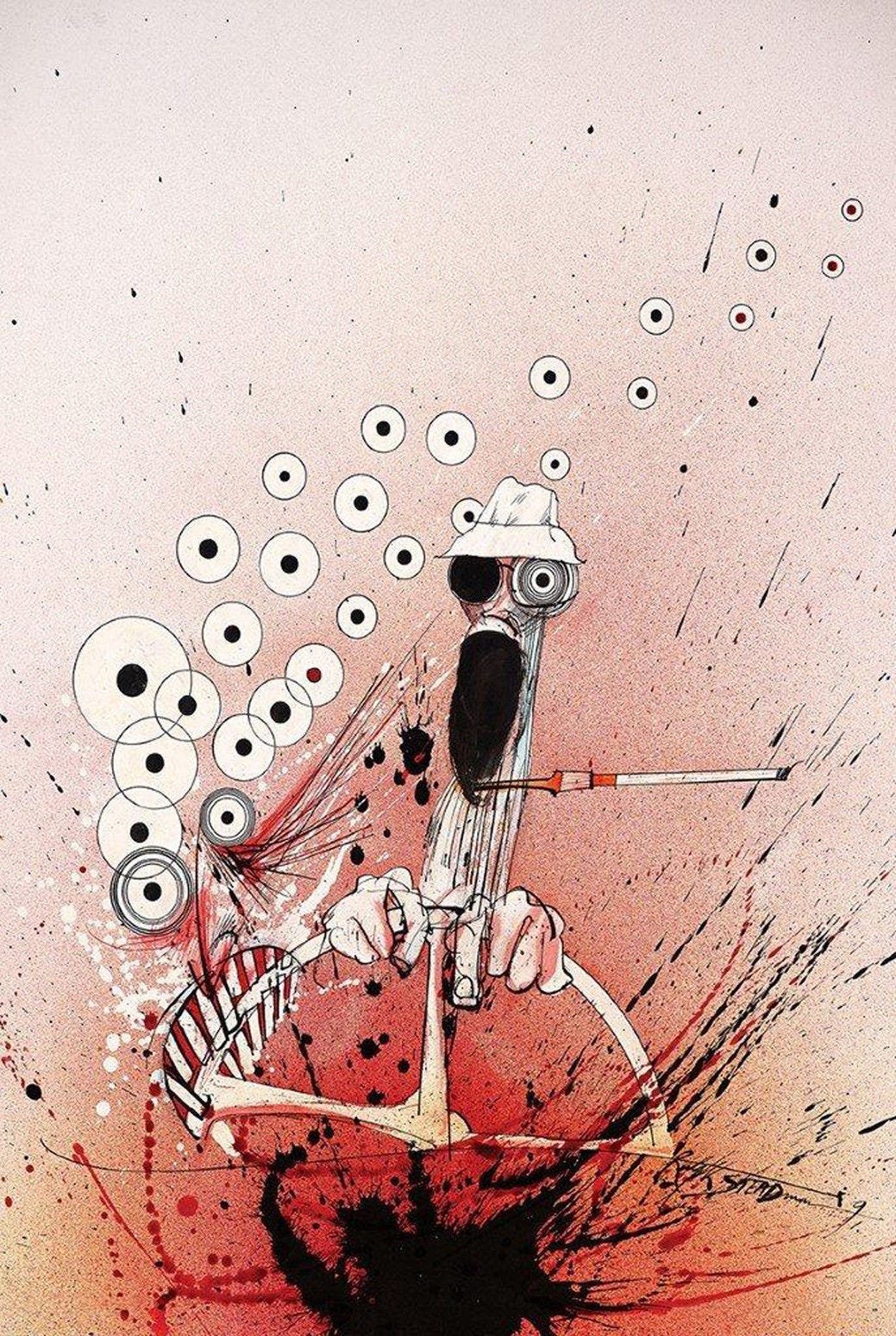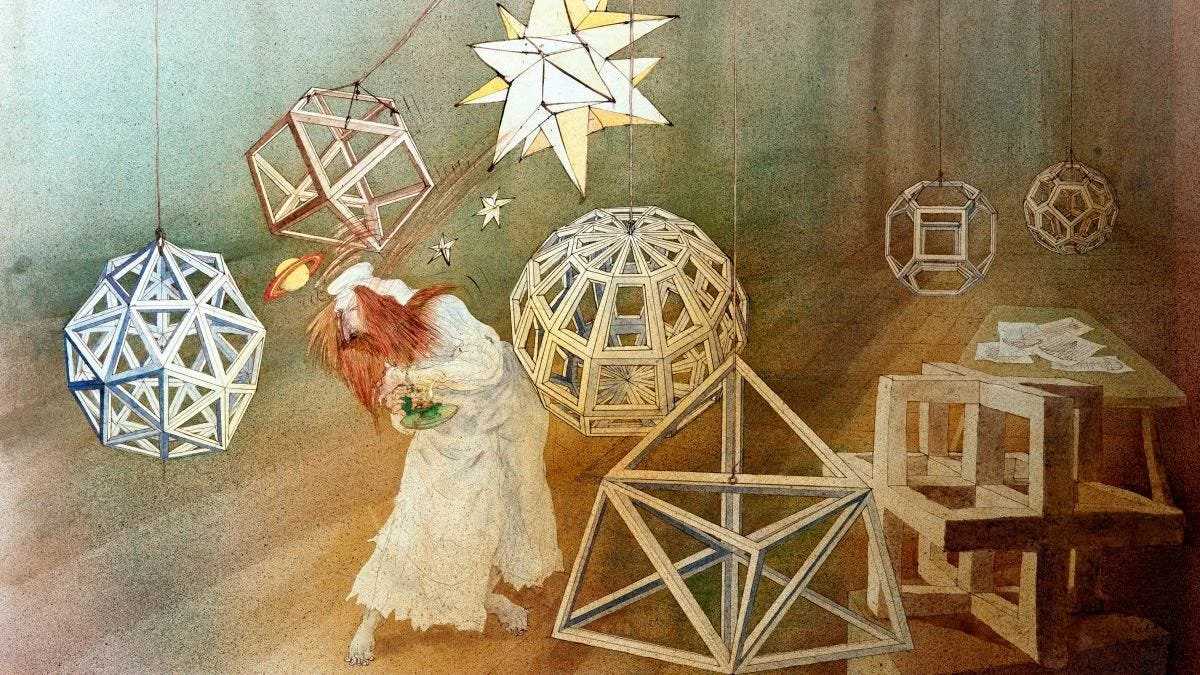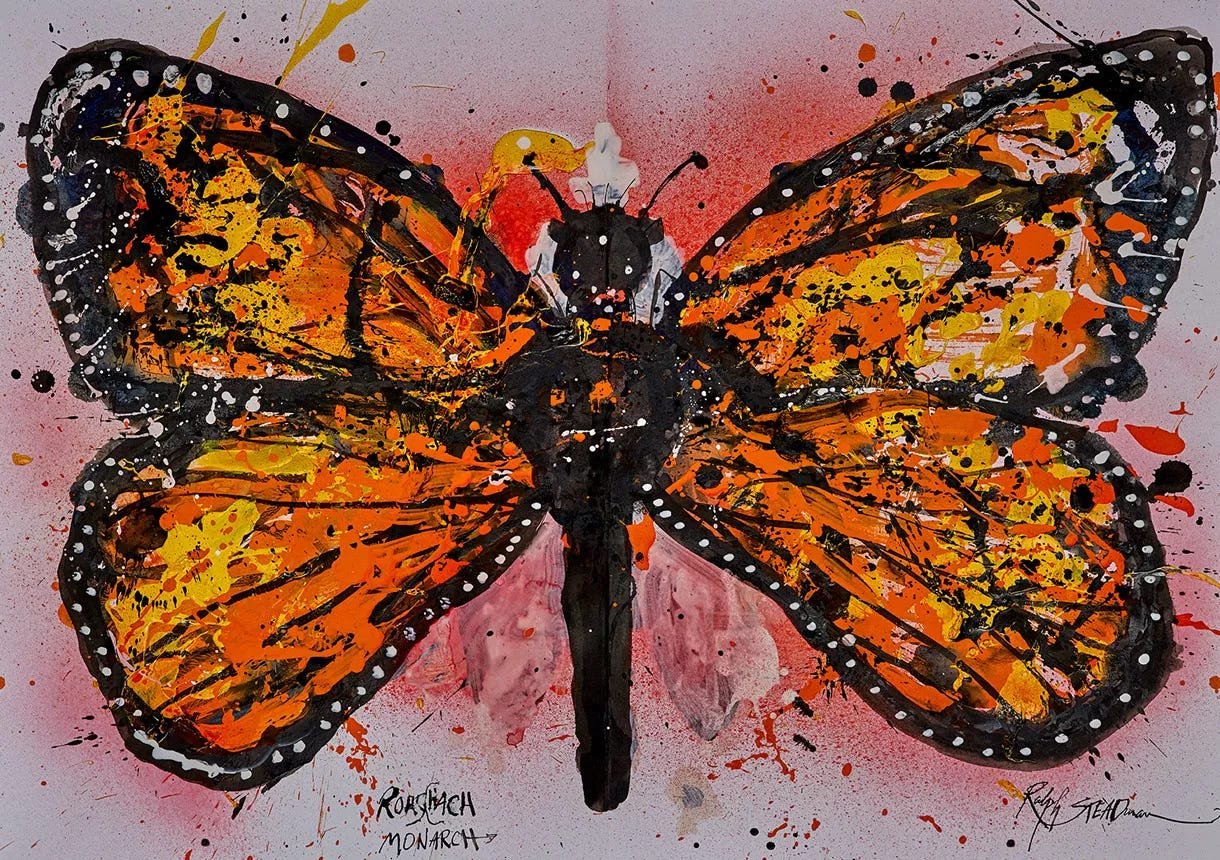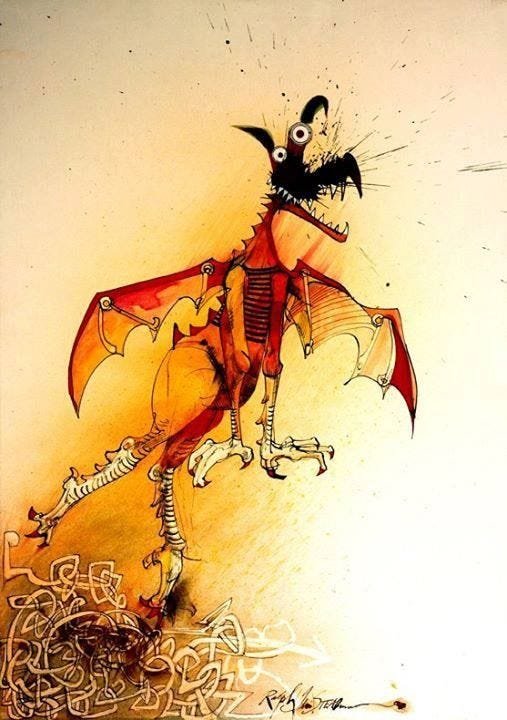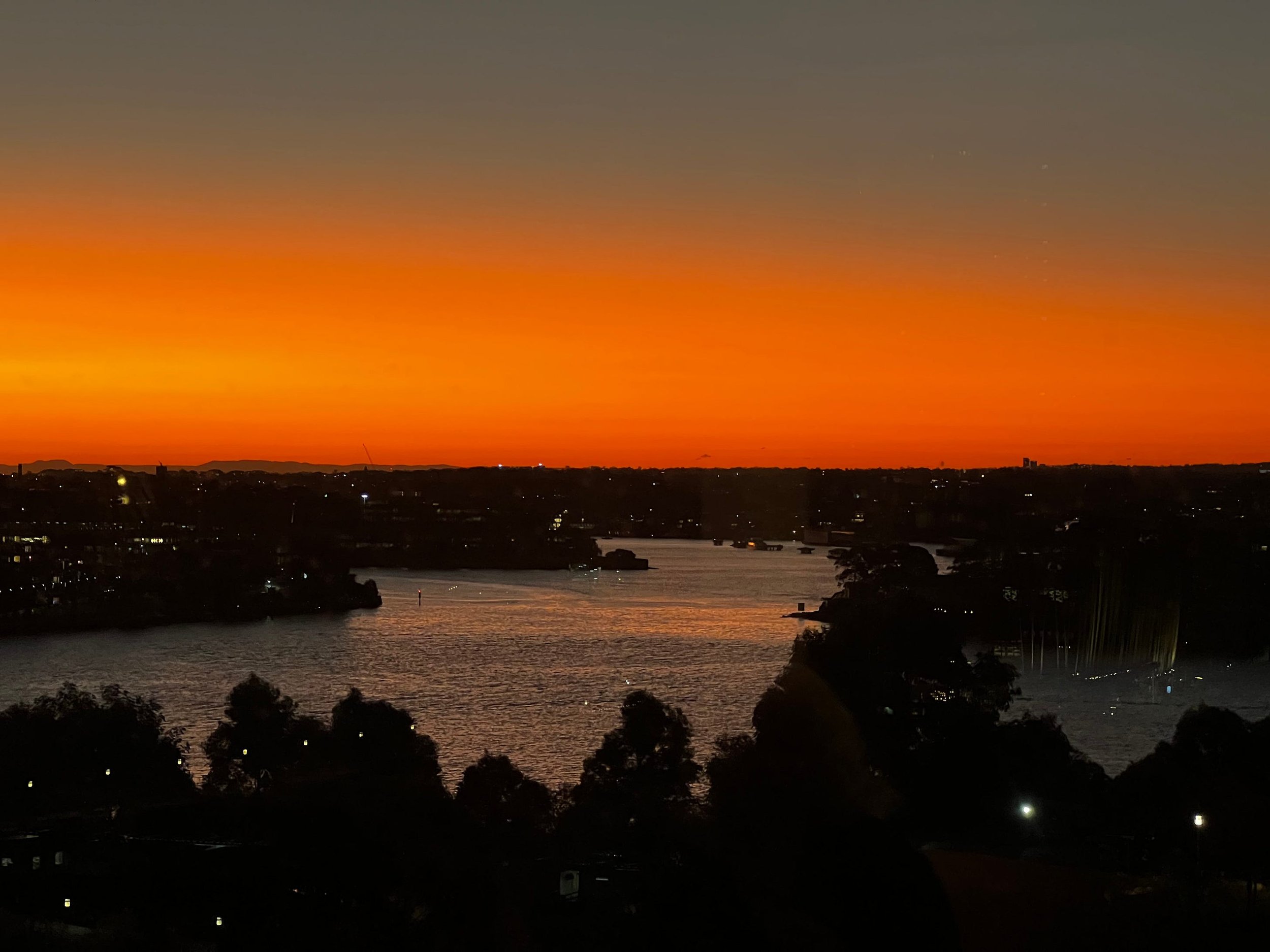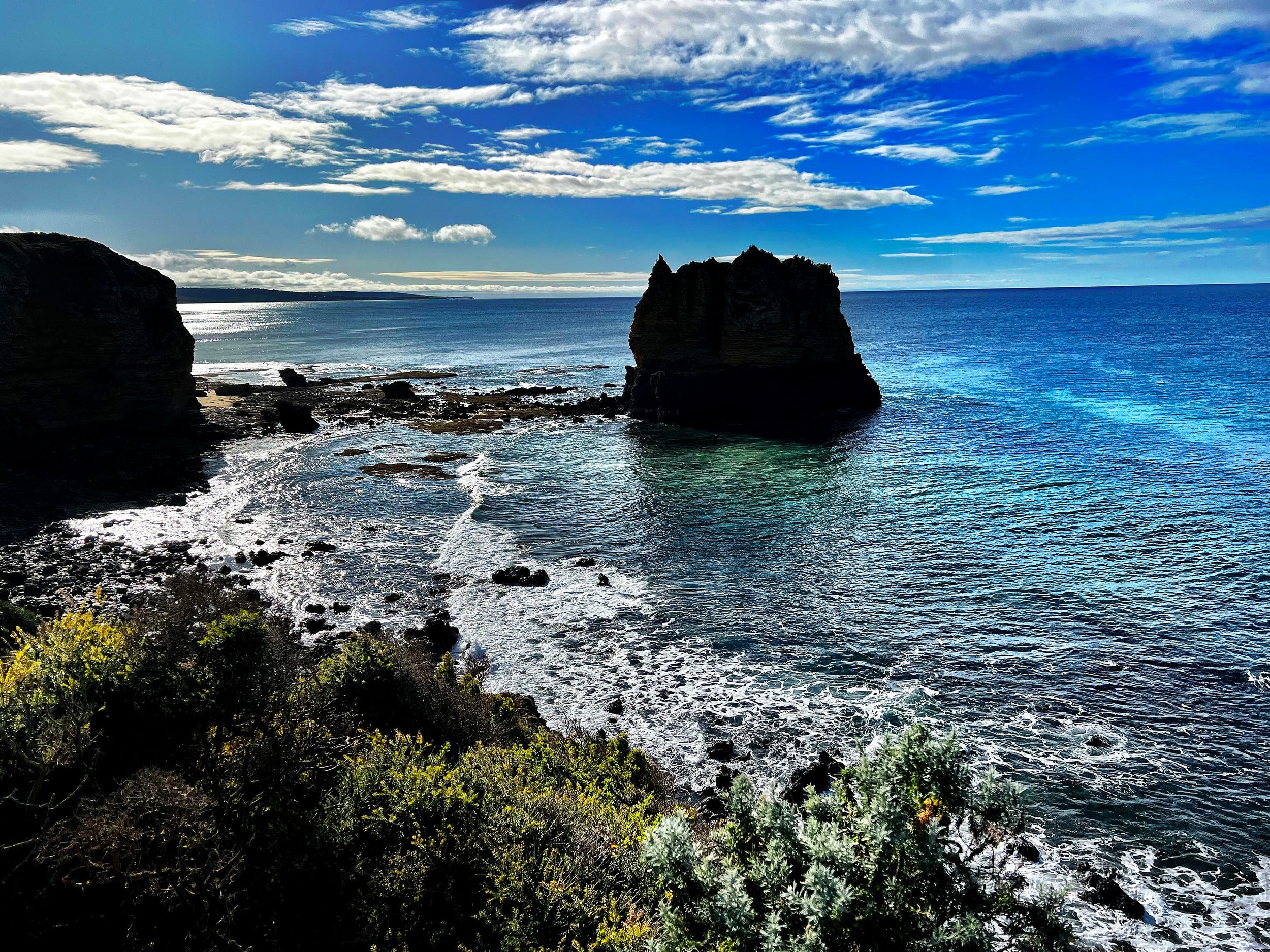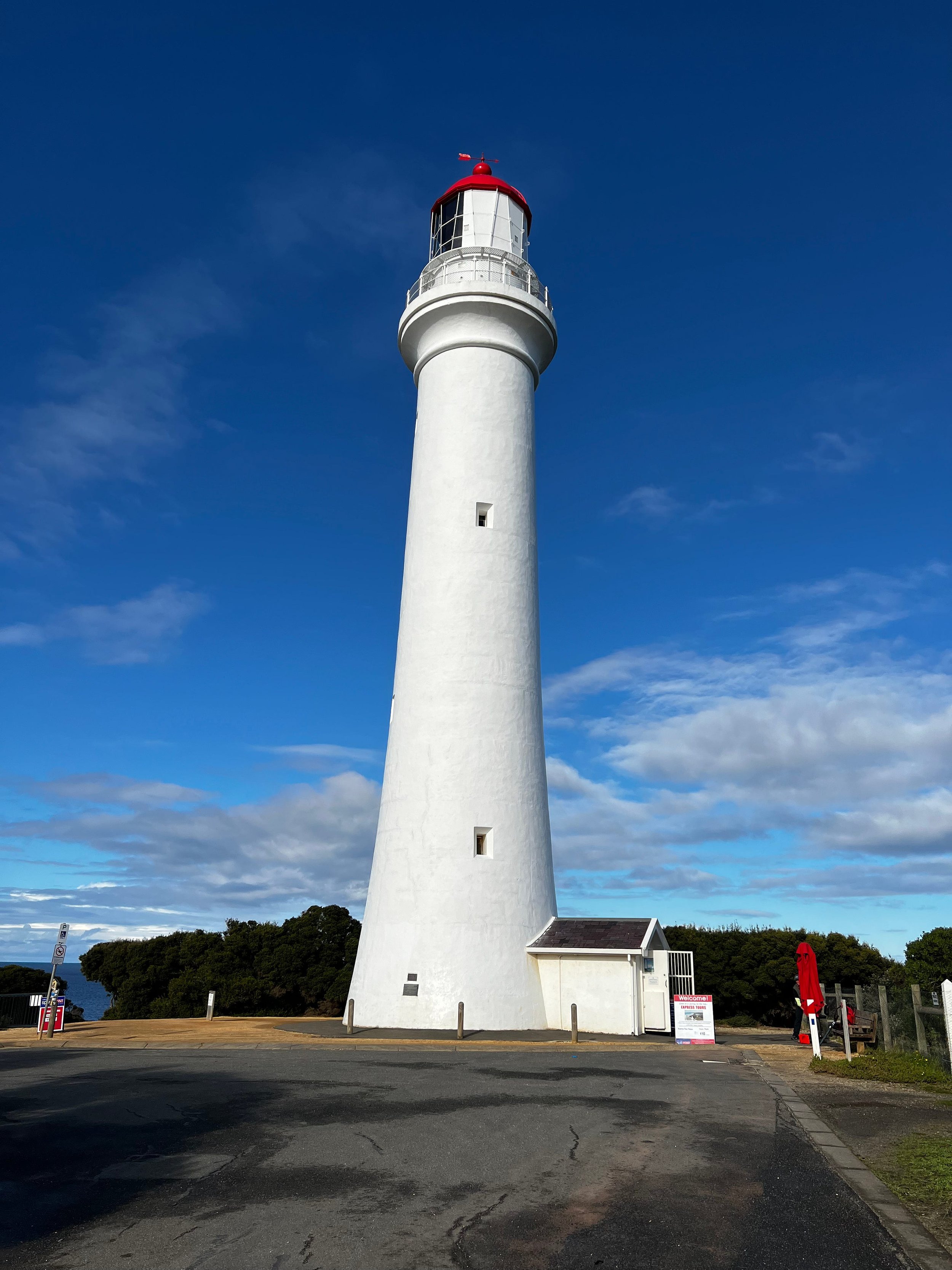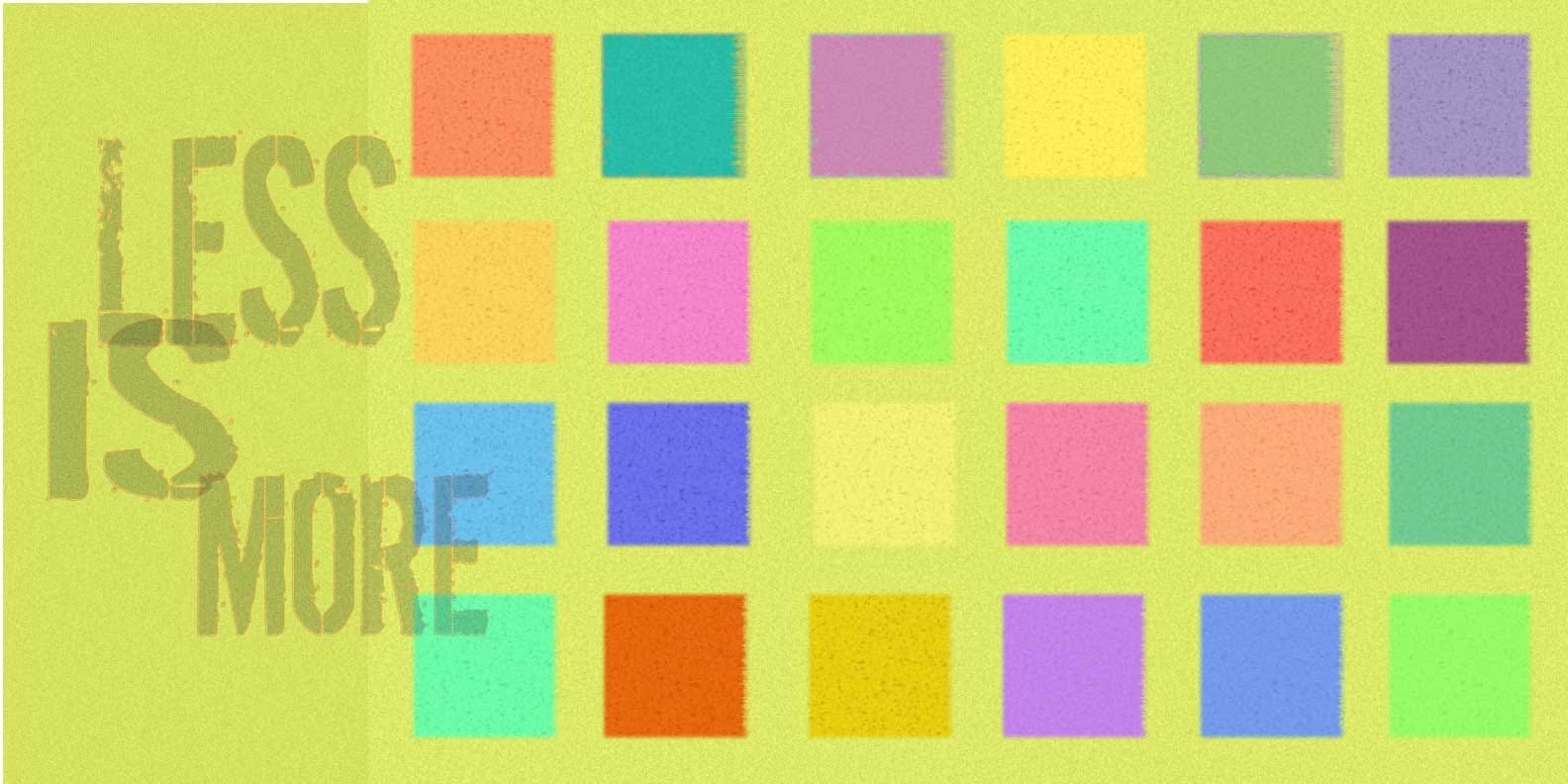What’s Next?
This thought letter the “The Future Does Not Fit into The Containers of the Past” is now 2 years old.
It launched with the goal of being a gift that was 100% opt-in, completely free, and bohemian in nature covering a range of very different topics but infused with a growth and future mindset.
Despite zero advertising the thought letter is read by about 25,000 people every week.
It has found its audience by being mentioned at speaking events and a weekly social media post on LinkedIn, Twitter, and Facebook. But most of the audience has been built by readers forwarding to their friends, colleagues and organizations and positive word of mouth.
Reflecting the diversity of topics it is read globally by thousands of people early in their career and by over 500 CEO’s and Presidents of companies. Readers work in a range of industries across business, finance, academia, art, science and technology.
Thanks for the support.
The Future…” now easy to access, continuously updated, and quickly shareable!
At the request of readers who would like a way to easily access the past two years of writing (since I do not write about news, current events, or politics almost every piece is as relevant today as when it was written) I have launched a continuously updated page that is easy to bookmark and share.
The page curates and organizes the writing that has resonated the most into twelve different categories that people care about from “The Future” to “Becoming a Leader” to “Selling Better” to “Upgrading Our Mental Operating Systems” to “Managing Careers” and much more.
The page can be found here: https://rishadtobaccowala.com/100
If you would like to introduce someone to my writing and thinking please share this post or the link above! Share
What Next? Podcast.
Two years ago, around the same time I started publishing this thought letter, I began hosting a podcast called “What Next?” for the Publicis Groupe where I had spent my entire 37 year full-time working career and to whom I have been fortunate to remain connected as a Senior Advisor.
In the 65 episodes recorded to date, I have spoken with a spectrum of people including historians, scientists, entrepreneurs, business leaders, venture capitalists, marketing leaders, advertising giants and many others on what they believed the future held and how we could align ourselves and transform our companies to thrive in such a future.
Until now “What Next?” had been available only to the 87,000 global employees of the Publicis Groupe but now with the release of 8 Episodes it is now available on all major podcast platforms including Apple and Spotify. A brand-new episode will be released each weekend.
There are some amazing guests who have already been recorded and scheduled to appear over the coming months.
The readers of this thought letter may find the podcast series relevant for three reasons:
Just like this thought letter it is focused on the future and how we can grow and transform to thrive there.
Like this thought letter it is a gift completely free of subscription fees or advertising.
The two share a common voice and writer but the podcast also brings in a diversity of amazing voices.
The first 8 episodes (each about 30 minutes and tightly edited to maximize insights per minute and respect your precious time) reflect this spectrum and diversity in the range of guests. Listen to any that catches your fancy. If you listen to a few you will realize how diverse in topic, mindset and perspectives each are.
Here is a brief summary of each of the 8 episodes:
Four predictions by a $20 Billion Deal Broker You Don’t Want to Miss
Terence Kawaja, CEO, and co-founder of LUMA Partners, is the dealmaker in the media sector. Check out this episode where Terry (as he is known to friends) predicts “zero-based calendaring”, how marketers need to “portfolio re-balance” their spend from physical retail to e-commerce in a rapidly changing commerce landscape post-covid and where the metaverse will be found (and it’s not on our heads).
From the BBC to B2C
In a very special episode, Rishad talks to renowned historian, award-winning BBC broadcaster and digital business entrepreneur Dan Snow. They explore how Dan has accelerated away from traditional broadcast to build an agile and successful digital content business by exploiting the impact of digitization.
Data, Lies, and Software
Brittany Kaiser, Cambridge Analytica whistleblower, author of Targeted, co-founder of the Own Your Data Foundation and leading player in the Netflix film The Great Hack, explains how data was weaponized in the Obama, Trump, and Brexit campaigns, what future public data policies look like and the opportunities to grow beyond the big platforms.
Is the Agency of Tomorrow, the Agency of Today?
Marla Kaplowitz, President & CEO of the 4A’s (www.aaaa.org) , discusses how the relentless expansion of digital platforms will redefine client and agency relationships, the new skills needed in agencies, and ‘quantum marketing’.
The Sound of Work
Rishad talks to neuroscientist and sports psychologist, Dr Julia Jones about how sound and music can improve your performance whether you’re working from home or in the office. Her book The Music Diet (published in 2019) championed a new approach to workplace wellness. See www.neuronwellness.com for more info.
Can’t Sell Won’t Sell
In 2022, 85% of Cannes’ Grand Prix winners were social purpose/charity related campaigns. Advertising's most influential champion of social purpose, P&G's Marc Pritchard, surprised and even shocked many in the industry by announcing that we needed to now prioritize generating growth over doing good. That's an argument Steve Harrison has been making since the launch of his book "Can't Sell, Won't Sell: Advertising, Politics and Culture Wars. Why ad land has stopped selling and started saving the world". Here he discusses what the IPA called "the most provocative advertising book in years" in what could well be Rishad's most provocative podcast in years!
Lévy on the Level
In a wide-ranging interview, Maurice Lévy shares the inside story of the Power of One, how Viva Technology is poised to evolve, and why “the blank cheque of trust” is worth more than the paper it’s written on. He speaks candidly about his own “basket of failures” and why you should “stay in bed at home” if you’ve no passion for the work you do.
Data Dazed and Confused?
Rishad talks to Timandra Harkness, Fellow of the Royal Statistical Society, broadcaster, and author of Big Data: Does Size Matter? about the uses and abuses of data during Covid and what we might expect in our personalized century.
A great team spread around the globe puts this together:
Executive Producers: Christopher Harrison and Severine Charbon
Producer: Lara Parker
Audio Engineer: George Turner
Audio Engineer: Michael Powell
Sound Designer: Grzegorz Fiedorowicz
Project Coordinator: Anne Bor Gloaguen
Communications Consultant: Karen Lim
Host Photo: Emmanuel Andre
Theme Music: So Solid Sounds
Post Producer: Zuzanna Brzezinska
Editors: Mark Jewitt / Gilly Smith
You may want to subscribe by clicking by on the the words “ Apple” or “Spotify” below (The podcast has been distributed globally across most if not all platforms and not just Apple and Spotify).
You might find them intriguing, interesting and irreverent!
Thank you!
Embracing Excellence.
Over the years some simple and impactful pieces of advice:
“Find something or somebody to admire”
“Observe excellence”
“When you reach for the stars, you may not quite get one, but you won't come up with a handful of mud either”
We all have limited time, and we can spend it engaging with people and things that we admire, or we can spend it looking down on people and discussing what angers, disappoints and troubles us.
There will always be things that enrage us and gets us upset and these are readily served up by todays algorithmic mediascape.
But focusing our attention this way may leave us empty, spent and not any better off than we were before.
But, if we focus on excellence and learning from people or things. we admire we are more likely to come away fulfilled and inspired, wanting to reach higher and strive for growth.
Every few weeks this thought letter will focus on something or somebody that the author believes is “the absolute best in the world bar none” and that is available to everybody for little to no cost that bears listening to, watching, or engaging one’s attention with.
Today it is a television series that will make you feel, see, and think differently about yourself, other people, how to look and listen and much more.
It is not just a great body of work but a work of art that will reverberate for years.
The best television show made to date.
A case can be made that we are living in the greatest time for television.
There are nearly 500 scripted shows in the United States alone. Modern digital tools and competition for content among a plethora of streaming services are enabling more voices and more shows to be more available to more people than ever before.
And at the same time our televisions are getting larger with better pictures and sound (listen with wireless headphones for a theater experience) and streaming gives us the opportunity to eliminate commercials and to consume the story telling on our own schedules.
The pantheon of great shows span the world and include shows like “Borgen”, “The Bridge”, “Fauda”, “The Bureau”and many more from outside the US and “The Sopranos”, “The Wire”, “Mad Men” and “Breaking Bad” from the US.
And then there is one that matches the quality of these legends but could be the best television series made to date.
A series that ended this week after six seasons spread over 7 years and 63 episodes and is now available worldwide on Netflix and other platforms.
Better Call Saul!
Why Better Call Saul?
Better Call Saul is a prequel to Breaking Bad which is usually on the list of the best two or three television shows ever. It is the story of how one of the main characters of Breaking Bad a lawyer called Saul Goodman came to be.
Over the years the prequel went from being very good to being the equal to and then maybe better than the original.
How does one reach for excellence? By focusing on five things that this television series personifies:
Emphasis on talent.
Culture of excellence and teamwork.
An attention to and sweating of details.
Aligning with and leveraging technology.
Respecting and trusting viewers.
1) It all begins with talent: The show runners and much of the crew of Breaking Bad worked on the new show and many of the stars of the first show play roles on the new show joined by many new actors. You begin with world class talent and stir in years of experience, and you have magic!
2) Culture of excellence and teamwork: Because of the quality of Breaking Bad talent of every sort wanted to work on the new show. But it was not just the quality of Breaking Bad that attracted talent but also for the atmosphere and culture of diversity, fairness, empowerment, and teamwork that made for an amazing working atmosphere which made everyone jump at the opportunity to work on the new show. There was an emotional buzz to every day of production that ran across everyone from the main stars to the carpenters working in the prop department. This showed in the work. You can feel it here in the out takes on the last day of the set.
3) State of the art craft and attention to detail: The late Roger Ebert quoted Howard Hawks who said a good movie has “Three great scenes. No bad scenes”. As we get into the later seasons of “Better Call Saul” we have three or four or five great scenes in an hour and there is no single episode among the 63 episodes that will not make you stop and say, “I have never seen anything like that before!” or “How did they do that?” From scripts that are written by wordsmiths who do think visually, to casting that is perfect to editing and lighting that moves you this show has it all.
The attention to detail includes the need for space and silence.
Here is an article in the Wall Street Journal titled…How Better Call Saul Redefined the Art of Television and contains this quote…The visual language of “Saul” begins with its writers. Their breakdowns of how scenes should look are more extensive than those in typical TV scripts. “A lot of people think writing is about dialogue, but for us it’s the spaces in between the dialogue that are the most important,” Mr. Gilligan says.
4) Leveraging technology to enhance storytelling: This show looks and feels different because its creators understood how television technology at home was changing and also how modern digital cameras and editing was enabling storytelling in new ways. From “How Better Call Saul Redefined the Art of Television”:
In its final episodes, the prequel has caught up to the timeline of “Breaking Bad.” When that show first hit cable in 2008, more and more viewers had flat, wide-screen TV sets in their homes, but many TV directors had not yet abandoned techniques used for old-fashioned squarish screens, says Mr. Gilligan, who created “Breaking Bad.”
“Everyone was still framing claustrophobically tight,” Mr. Gilligan recalls. For today’s TV screens with similar proportions to cinema screens, “I wanted to frame in the way John Ford and Akira Kurosawa did, to crib from two of the greats. We tried to make ‘Breaking Bad’ look as much as we could like a western.”
“Saul,” also set in Albuquerque, N.M., premiered in 2015. Before production started, Messrs. Gilligan and Gould presented a slideshow for their crew with images from films they wanted to use for inspiration. They included 1970’s “The Conformist,” known for director Bernardo Bertolucci’s unique angles and framing.
Because the later seasons of Better Call Saul were produced a decade after Breaking Bad ended the better technology truly enhances the visual aspects of the story telling. Here is just one scene less than two minutes long that took days of filming:
5) Respecting/Trusting viewers: Some of the best art and storytelling in the world is effective for what it leaves out or does not depict as much as what it leaves in or depicts. Many of the most powerful scenes and storytelling in Better Call Saul trusts the audience to connect the dots and fill in the blanks.
More is less when you respect the audience.
Learning how excellence is sculpted.
Not only is “Better Call Saul” among the best if not the best television show but it’s companion podcast is possibly the best free master class one can get on every aspect of how excellence is sculpted.
Unlike other podcasts about television shows this one is unique in what it covers and who appears in it.
First, it is not about what happened in each episode but on how the episode was crafted. Not the entire episode but maybe two or three key scenes.
Second, the creators of the show Vince Gilligan and Peter Gould participate in each podcast and the guests are not just the actors/actresses but make up-artists, sound engineers, editors, directors of photography, script writers, location scouts, prop creators, music choreographers and the entire spectrum of talent that goes into the making of the show.
It is a master class that will blow your mind on not just how this show is made but how stories are told, the details that go into each minute and you will never every see, feel or listen to anything you watch in the same way.
A master class on how a masterpiece is created minute by minute, block by block by the people who crafted the masterpiece speaking in english for non-experts.
Here are links to the podcast on Spotify and Apple but it is available free of cost and free of advertising and promotional interruptions on every major podcast platform:
Watch an episode of tv and then listen to an episode of the podcast.
“Big big things inside people.”
In the end what made “Better Call Saul” was its delicate and nuanced understanding of humanity.
It combined the quest and search of Homer’s “Odyssey” with the comedy of “The Simpson’s” Homer Simpson. It mixed tragic elements of Shakespeare with the uplifting elements of the redemptive power of love.
It was about the complexity of individuals and the forever journey of becoming.
It was a series that was constrained in one way that it needed be true to its sequel but as the best creative people have always stated there is nothing as powerful as a tightly constrained brief to unleash the powers of imagination and storytelling.
In one way this is much ado about a fictional story and a television show.
But in the end that is all we are.
We are stories and one person is many stories.
Joan Didion wrote “we tell ourselves stories in order to live”.
Like most great art, Better Call Saul makes you feel more alive when interacting with it and transforms your perspectives long after the experience.
De-Bossification.
Art by Ralph Steadman
In many industries particularly “White-collar” ones the era of “bosses” is in decline.
There is a rise in the need for leaders, guides, coaches, mentors, role-models, creators, and builders.
Less of a clamoring for bosses, managers, controllers, monitors, evaluators, and paper pushers.
This shift has been driven by changing demographics, the spread of technology, the rise of unbundled and distributed work, new behavior expectations, and a re-definition of what “work” is including the rise of fractionalized and free-agent talent who work for themselves or at multiple jobs and are expected to comprise most of the work force in the US by the end of the decade.
For more about these changes please read The Future of Work and The Transformed Talent Terrain.
Art by Ralph Steadman
The New Leader.
Modern leadership is about zone of influence versus zone of control.
People follow people and not titles.
Leadership is a role and not a job title.
It is a way of being infused with a passion for excellence and a quest for middle to long term multi-stakeholder growth (company, community, employee, leader) versus a focus on the short term and emphasizing only investors/owners.
Most importantly it is about the continuous feedback and learning of a growth mindset.
Art by Ralph Steadman
Why the old model is collapsing.
Once upon a time a manager controlled the flow of information, access to opportunities and was a font of expertise and craft.
Today the half-life of knowledge is growing shorter and shorter and the “way of this is the way things were done” is often the opposite of what needs to be done as new competitors and customer expectations do not care a fig about the way it was or is.
Talent can find information, opportunity, and knowledge at a click of a mouse or the pinch of a finger and often are working at the other side of the world making monitoring, controlling, and overseeing difficult.
The future does not fit in the containers or the mindsets of the past and many bosses are like sailors navigating their ships by looking at the mirage of a star that has long set.
Every year fewer and fewer people care about the dues paid or the way it was or what was done.
Experience that matters is the ability to practice at the state of art, be at the top of one’s craft, have the ability use previous learnings to find patterns, connect dots in new ways and distill insights.
Art by Ralph Steadman
Transforming from boss/manager to leader/coach is possible for those wishing to try.
As times change the best managers adapt and learn and flex into new shapes and learn new skills.
Just because someone has bossy traits and was forged in a different era does not mean they cannot re-invent and re-wire their skills if they want to.
This transformation requires three conditions:
First it requires today’s bosses to accept that to grow and remain relevant they will have to change and while it may be difficult it is better than becoming irrelevant.
It also requires their leaders to ensure that new incentive systems that are more about zone of influence, growth of craft and people versus zone of control of budgets and team size are put into place.
A new way requires new pay.
And there is an urgent need for coaching and training and patience to help today’s managers become tomorrow’s leaders.
A personal hunger supported by new incentives and buttressed with training including the opportunity to self-learn is the formula.
Talent is short and it is a mistake to believe that seasoned employees cannot grow into new potential.
New brooms sweep clean but old brooms know the corners.
Art by Ralph Steadman
How one can “De-Bossify” oneself.
Every human has the potential to grow and change since in many ways growth and change is what life is.
A three-step program:
Make time to learn: To do so requires us to listen to the voices of discontent and concern in our own head that we may be understanding less or lacking skills we need and instead of suppressing these or beginning to be buzzword bingo players spewing the latest in management or tech lingo to wallpaper a lack of understanding we need to go back to school.
Today because of global shifts, demographic changes, advances and technology and the shock of Covid-19 everybody needs to be schooled and no one is alone. Knowledge and skills must be learned and are not immaculately gained.
Challenge ones thinking by seeing at things from outside us: Whether it is getting feedback from others or building a case for the exact opposite way of doing and thinking from the way we currently practice it is important to stretch oneself and look at things from a different vantage point.
Gaining new perspectives via provocations and new point of views can be thrilling and not just chilling.
Do/Build/Create/Practice: Modern leadership is being able to guide through experience. If one wants to learn about the Future of the Internet reading a book on the Metaverse and appointing and delegating to a Chief Metaverse Officer is not enough. One needs to don a VR headset, mint an NFT, get a Meta-mask or other wallet, trade on a De-fi platform…
We are all must be apprentices now if we wish to grow up to be or remain the Magic Sorcerer!
May the force of de-Bossification be with us!
Sacred Hours.
Every week contains 168 hours of which 100 hours are spent asleep and at work allowing for the rest of life to fit in 68 hours.
For many the remaining 68 are filled with a hurly burly of responsibilities from child to elder care, cooking, cleaning, errands, medical appointments, commutes and more.
The few free minutes in between are often buffeted with headlines, social media streams looking to colonize our minds and a dozen competing claims on our time and attention.
No wonder that so many feel stressed, fatigued, and frenzied.
As William Wordsworth wrote:
“The world is too much with us; late and soon,
Getting and spending, we lay waste our powers; “
A special hour every day.
Some of the most contented and satisfied individuals regardless of their station in life or the pressures on their time and attention, have found a way to create an oasis of stillness and a special sanctuary that helps center them, grow them, and makes each day meaningful regardless of what the world of commerce and competition might bring in setbacks, challenges, and pressures.
They set aside an hour every day for themselves. Not their work, not their families, not for all those who clamor for it or to tackle a list of never-ending to-dos which when allowed to will absorb all free time.
An hour earmarked and blocked by them to spend on themselves.
It might be spent learning, reading, exercising, thinking, meditating, walking.
It is solitary and it is special.
A sacred hour.
Some may think of this hour as a selfish hour but is an hour that allows individuals to be effective and productive in all the remaining hours of their day whether it be at their jobs or tending to their family and social obligations.
Finding 7 hours a week for oneself.
Surely one cannot be serious that one can find almost a working day of hours for oneself every week?
While not easy there are a combination of four different tactics that one can utilize to free up much more time than seven hours a week depending on one’s responsibilities and flexibilities.
The four tactics are
a) Zero based calendaring to eliminate the unnecessary.
b) Delegation to mitigate the pressures of the necessary.
c) Reduction of frequencies of meetings.
d) Compression of time allocated to a task.
Zero based calendaring.
In “A Moveable Feast” Ernest Hemingway’s love song to the incredible city of Paris he writes…” If you could keep from making appointments, each day had no limits”
There is nothing as invigorating as an empty calendar. It does not mean that one is not needed but one has the freedom and liberty to spend the day in the way that is most meaningful versus being shackled to a merry-go-round wheel of motion and action that often feign to be important, special, and essential.
What if one begins with an empty calendar wiped clean of all appointments and then transfers only those that you really believe are critical to this new clean calendar? Ask your colleagues and bosses how many of the meetings are just habit and are not necessary or could be a memo or held less frequently.
Just like work expands to fill time available appointments occur to fill one’s calendar.
Start with zero and build back versus trying to trim the bursting to seam calendars that resemble a barnacle encrusted underside of a ship.
Delegation.
The best leaders run positive “Ponzi” schemes. They surround themselves with people better and more competent than them and hand down as many of their responsibilities that they can and encourage them to do the same to the next level.
Everybody is stretched and growing, and their bosses can stretch and grow to the next level.
If one is doing too much it may mean that the people around us are not good enough or we are not growing and stretching them and so in time we will lose them.
We should delegate and do less.
Focus on one’s superpowers, growing others and thinking about the long term.
Reduction of frequency of meetings.
Business reality requires budget to status to board meetings for a variety of reasons from fiduciary to the necessary.
But can the weekly meeting be moved to twice a month or maybe once a month?
Does everyone have to attend every meeting?
If presence at a meeting is the way a pecking order is established at a company, we should wonder if this attracts talent or insecure politicians.
Less is more.
Compression of time allocated to a task.
One of the silver linings of the tragedy of Covid is that one can move from meeting to meeting by moving one’s “mind parts” without physically moving one’s “meat parts”.
This saves a lot of time in travel and other logistics.
Most Boards now meet once every six months in person while meeting virtually in between.
In addition to reducing the need for physical presence at all meetings we may also want to consider reducing the time for each meeting by a third or half. Pre-reads and tight management can significantly cut the time allocated without any significant loss in impact.
Personally, we might shave off a few minutes from our social media usage or Netflix use to enable finding time for our sacred hour.
How to make the most of one’s sacred hours.
With a little discipline one can find an hour a day for oneself and often more.
How one spends it depends on each one of us but blocking out an hour for oneself every day and ideally utilizing is early as possible before the pressures of the day make one lose control of the best laid plans is ideal.
If every individual looks after themselves, they can do a much better job at their jobs and caring for others.
Because in the end time is all we have and the way we spend our time is the way we spend our lives.
And living our lives as pinballs in a game where someone else is controlling the flippers may be filled with the excitement of velocity and blinking lights but is it our life?
For a few sacred hours let’s make it so.
Photography of The Great Ocean Road, Australia by Rishad Tobaccowala.
The Tao of TikTok.
In the past 1000 days the growth of TikTok has disrupted the media landscape.
It has shot past Google to become the most popular domain and the time spent daily on it is greater than all of Meta’s properties (Facebook, Instagram, and WhatsApp) and it is potentially even carving into the time spent watching analog television and Netflix!
It has become the key cultural currency and meme generator unleashing thousands of creators with followings of over a million people all around the world.
This article by Professor Scott Galloway is an absolute must read to understand the breath-taking rise of the platform.
Every individual and business stand to learn lessons from this amazing rise and its implications on the future of business, media, and culture.
A moat and walled garden can rapidly change to enable self-imprisonment.
The key asset of Facebook was the network effects of its social graph (all your “friends” were there) making it very difficult to launch a new competing entity. Its network effects, social graph scale and roach motel model of walled garden was a wealth generation engine for the age.
One of the few companies that competed against this social graph with some success was Snap driven in great part by its sheer product and design ingenuity. However its growth was blunted by Instagram carbon copying Stories and leveraging the strength of its scale.
TikTok practiced asymmetric warfare by eschewing the social graph and replacing it with an interest graph. Its algorithm and learning loops allowed individuals to be exposed to a spectrum of great content without having to bring any friends or create any content!
It then positioned itself as an entertainment platform versus a social platform.
Now Meta is responding by dialing down its social graph and working to create intent graphs with its Reels projects and by dialing up algorithmic results versus social graph results injecting all sorts of drugs into Instagram irking its users and creating some lurching Frankenstein mix of image/video and social/content graph.
One should never underestimate Mark Zuckerberg and the very deep talent pool at Meta as they seek to dramatically pivot their business but a lesson to be learned is that assets can become anchors and to win as an outsider one needs to change the rules of the game.
Every company should pay attention to whether what made it great can keep it great and wonder whether its competitors are the usual suspects sharing its perch in heaven or someone emerging from the slime with audacious new rules of engagement.
Focus and simplicity wins.
Everything about TikTok is built around focus and simplicity.
You can start right away and it simple to use. You do not need friends or must create content or enter any data to begin to enjoy the product.
And it is focused.
Just video.
One video that takes over the phone screen vertically.
No distractions.
For the viewer.
But more importantly for the algorithm and the learning models which do not have to deal with anything else.
It sees everything and learns everything fast.
And as your interests change (do you swipe, linger, replay?) it morphs and can stay current with your interests, tastes and passions.
Fast. Clean and Simple.
Companies and individuals who focus on core competencies and keep every part of the experience and what they do as simple as possible tend to win and we see it in spades with TikTok.
God-Like Power to unleash creators.
While a significant part of TikTok’s success is driven by its algorithms and training sets based on video usage plus simplicity, a third factor is the very powerful tools it gives creators that make it easy for people who want to create to do so.
This includes all sorts of lenses and filters that give one much of the power of Adobe’s Creative Cloud on a phone with no need for expertise plus music tracks and the ability to sample, build and morph other creators works.
Every individual has in them an ability to create and by enabling folks with amazing tools, the power of music, a set of starting blocks and an algorithm that enables newbies to break through and not just those with large followings like the Kardashians on Instagram and Mr. Beast on You-Tube, TikTok becomes the canvas for the rest of us.
For those unheard from. The crazy ones. It is the platform for the rest of us. The Apple versus the IBM.
The best companies serve their customers and ideally enable, empower, and ideally give them God Like power. Steve Jobs said a computer was a bicycle for the mind and Apple has combined beautiful design, utter simplicity, and empowering tools to become the world’s most valuable company.
TikTok is following the same rule book and it is probably more loved by its creators and users than its competitors are because it enables, empowers, and entertains them.
Too many companies give lip service to empowering and enabling but it is becoming the currency of success as power moves to individuals, talent, consumers, and customers. Often senior leadership in companies are too far removed or too busy speaking to each other or drooling over some useless political machinations and power operas to understand the revolution that is upon them. Smart leaders leave the towers of power and start thinking like creators and the builders they once were once again.
The story and the spreadsheet versus just the story or the spreadsheet.
For years the media business was driven by the belief that content was king. This began to be suspect as Google and Facebook and others hoovered up all the dollars proving that the people who could point to and drive traffic to content while capturing intent along the way were king.
Then the pendulum swung, and it all became data with Facebook combining excellent data skills that algorithmically transformed so-so content into an elixir that drove hundreds of billion dollars.
Netflix once had people believing it had a data sauce when its real success was driven by the genius of Reed Hastings to anticipate streaming, some first-class content they made for themselves and the nocturnal slumber of their content partners who woke up a decade later to understand they had been fueling their competitor with their content. Data played a part but just one part and by itself is no longer enough.
Now that Disney, HBO, and others have caught up it is clear there is no special data sauce and its back to pricing and content. This August it is going to be “House of the Dragon” HBO’s prequel to Game of Thrones versus Amazon’s “Power of the Ring” its Lord of the Ring’s spinoff versus Netflix “Sandman” and Disney “She-Hulk” combined with all sorts of pricing bundles.
The reality is that data and math of the spreadsheet matters. But so does meaning and the magic of storytelling.
TikTok combined the power of math (algorithms and teaching models) with music and movies (video) to create a juggernaut.
TikTok is an example of story and spreadsheet coming together in harmonic balance and every successful firm of the future will combine creativity and data, storytelling talent with data druids and technologists.
External forces intervene in every business.
Every individual and business plan are at the mercy of the four forces driving the future. These are the forces of multi-polar globalization (vs unipolar or western centric globalization), demographic change including media behavior, technology, and the long-term impact of Covid-19.
TikTok leveraged demographic shifts and technology of the second (mobile and social) and third connected ages (AI and 5G) to become what may be the future of entertainment and television. But the geo-political dynamics of multi-polar globalization and its pressures (ByteDance the owner of TikTok is a Chinese company) have limited its efforts to go public or buy a television network or more.
Geo-politics is the biggest near term challenge to TikTok.
Mark Zuckerberg was not being subtle when he shared a picturing of him surfing with an American flag in his hand…. Scott Galloway who is no fan of Mr. Zuckerberg has constantly brought up some Manchurian Candidate like scenarios that make him wary of TikTok too…
A reality every successful individual and company CEO and company should never forget: The external forces of globalization, technology, demographic changes and covid-19 must contend with.

